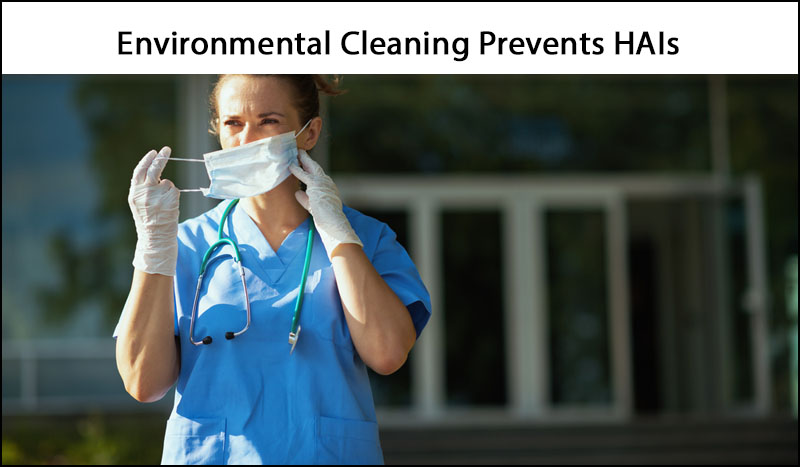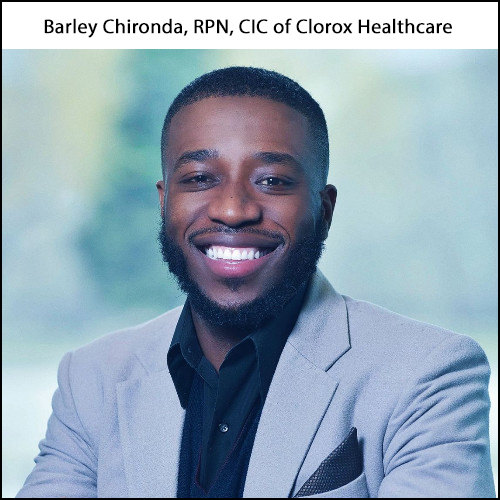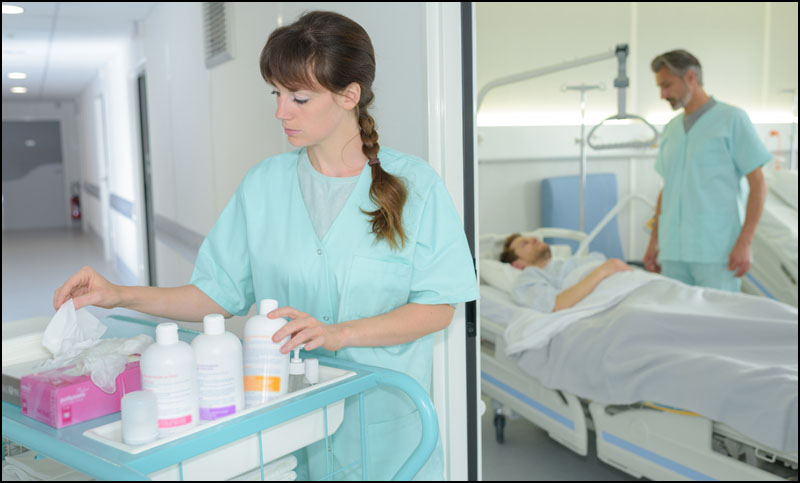How Proper Cleaning Reduces Healthcare Associated Infections
Healthcare associated infections (HAIs) acquired in medical facilities can cause immense harm and even death. The CDC estimates that on any given day, about 1 in 31 hospital patients has an HAI. HAIs result in an estimated 99,000 deaths per year and $30 billion in excess healthcare costs.
However, research shows that improving cleaning and disinfection practices can significantly reduce these deadly and costly hospital acquired infections.
Environmental cleaning plays a crucial role in infection control. Numerous studies have demonstrated that effective cleaning of high-touch surfaces helps minimize pathogen transmission by removing infectious agents. Both the CDC and World Health Organization have issued guidelines emphasizing the importance of hospital cleaning and disinfection for reducing HAIs.

High Touch Surfaces
Focusing cleaning on high-touch surfaces frequented by patients and staff is especially important. These include bed rails, tabletops, nurse call buttons, door handles, tray tables, and other commonly touched items. CDC recommends cleaning high-touch surfaces at least once daily and when visibly soiled to protect patients.

Barley Chironda, RPN, CIC of Clorox Healthcare emphasizes the importance of diligently cleaning the 17 high-touch surfaces in patient rooms, stating:
"Any one of these sites can carry pathogenic bacteria, so you need to make sure these are wiped down. In addition to furniture, equipment like stethoscopes and pens brought into rooms open up vulnerability and must also be disinfected."
Using the Proper Disinfectants is Critical
Not all cleaning products are equally effective at eliminating hazardous pathogens in the healthcare environment. To properly disinfect surfaces, hospitals must use hospital-grade disinfectant products that meet EPA registration standards.
The EPA registers antimicrobial products and approves their labels for specific claims, uses, and pathogen kill capabilities. Disinfectants approved for use in healthcare must demonstrate efficacy against dangerous organisms like MRSA, influenza, norovirus, and C. difficile.
EPA registration provides assurance that a disinfectant product has proven capable of neutralizing pathogens when used as directed.
Hospital disinfectants come in various forms including wipes, sprays, and concentrates. Common active ingredients in hospital disinfectants include sodium hypochlorite (bleach), quaternary ammonium compounds, and hydrogen peroxide.
But not all disinfectants are alike.
Facilities must select appropriate disinfectants for each use case and ensure proper dwell times for maximum microbial kill.
Barley Chironda also emphasizes the key role nurses play in selecting effective disinfectants, stating:
"Nurses have to wipe down equipment every day, every hour of their shifts, so they get involved in choosing products they like that also work. Nurses identify when current disinfectants aren't effective and when new ones work well through continuous evaluation. As frontline staff, their input is critical because we'll all be patients one day."
Following required wet contact dwell times is imperative for surfaces to become fully disinfected. The dwell time refers to how long a disinfectant must remain visibly wet on a surface to achieve its advertised pathogen kill claims.

Proper Training and Technique Are Vital
Simply using registered disinfectants alone is insufficient for reducing HAIs through cleaning. Effective technique and consistent adherence to proven cleaning protocols is equally important.
Hospitals must invest in thoroughly training medical cleaning services staff on proper cleaning methods and infection control procedures.
Consistently applying proper techniques guarantees uniformity and compliance. Staff should follow detailed checklists outlining step-by-step protocols for each cleaning task.
Supervisors must regularly audit cleaning performance to ensure standards are upheld. Facilities should provide ample opportunity for continuing education and refresher training on infection control.
Proper techniques include washing hands before and after cleaning rooms, wearing appropriate PPE, working from clean areas to dirty areas in patient rooms, discarding used cloths after each room, and immediately reporting any spills or accidents.
Additionally, staff must learn the optimal cleaning methods for each type of object and surface.
For example, privacy curtains should be gently agitated to dislodge pathogens before disinfection. By comparison, bathroom surfaces should be scrubbed vigorously to remove grime before applying disinfectant.
With detailed initial training, ongoing refreshers, performance auditing, and protocol reinforcement, cleaning staff can consistently implement proper techniques that enhance the efficacy of environmental cleaning. A contaminated surface is only as clean as the worker's last pass with the cloth.
Steps for Proper Medical Cleaning
According to the Center for Disease Control, these are the steps for the proper way to clean and disinfect so you don't take your work home with you.
- Know the level of disinfection needed - High, intermediate or low-level based on whether surfaces are critical, semi-critical or non-critical.
- Clean surfaces first - Thoroughly remove all visible dirt, organic matter, and debris by scrubbing before disinfecting. Cleaning is crucial for disinfectants to work.
- Apply disinfectant for the full contact time - Wet disinfectant must remain on surfaces for the time indicated on the product label to fully kill pathogens. Reapply if needed.
- Remove large spills properly - First absorb body fluids and substances with absorbent materials, then clean and disinfect the area.
- Use disinfectants properly - Apply fresh pre-saturated wipes or prepared solutions to surfaces. Don't let solutions become breeding grounds for pathogens.
- Follow CDC and OSHA guidance - Comply with all regulations and recommendations for cleaning healthcare environments and handling contaminated materials.
Following these proper cleaning steps, using recommended disinfectants like Caviwipes or Cavicide, helps prevent the spread of healthcare associated infections.
Get Bids for Medical Cleaning Services
Use our free request for quote tool and get price quotes from multiple medical cleaners in your area. There are no obligations to hire and we won't ask for your credit card information.

